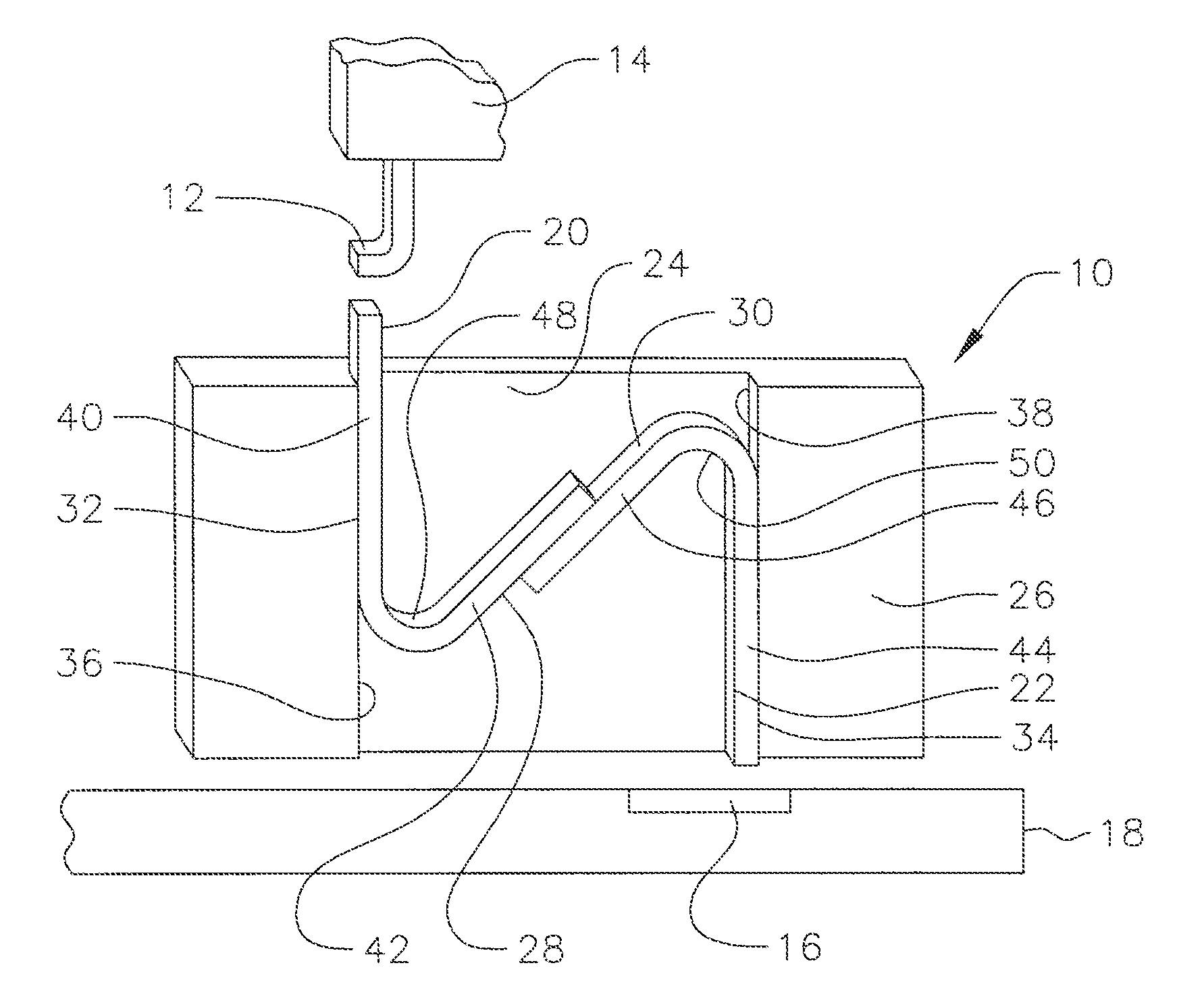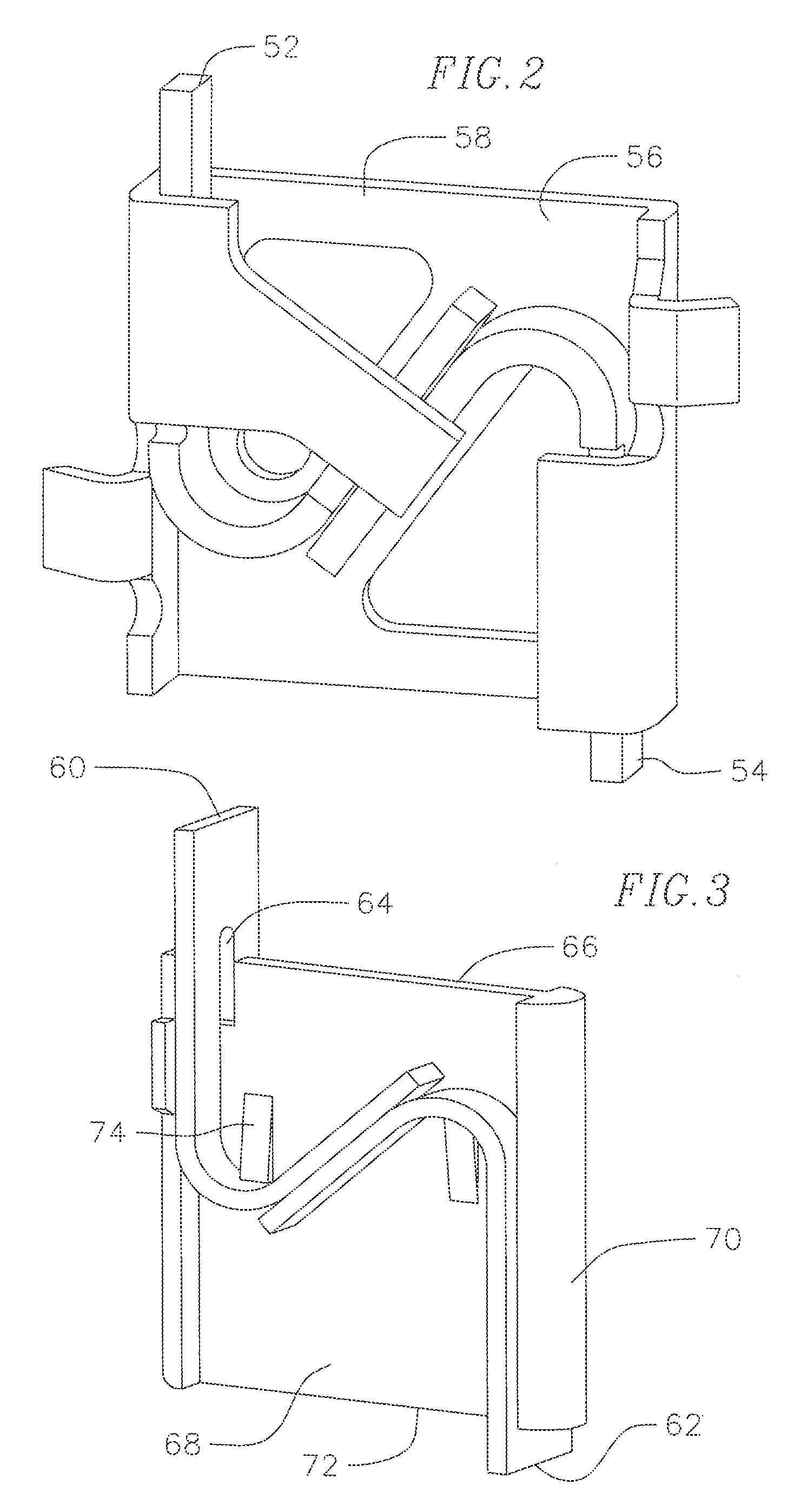Semiconductor electromechanical contact
a technology of electromechanical contact and semiconductor, which is applied in the direction of electrical equipment, printed circuits, coupling device connections, etc., can solve the problems of small space available, extremely small travel, and rapid wear of load boards
- Summary
- Abstract
- Description
- Claims
- Application Information
AI Technical Summary
Benefits of technology
Problems solved by technology
Method used
Image
Examples
Embodiment Construction
[0017]Referring to FIG. 1, a compliant semiconductor electromechanical contact assembly 10 of the present invention is illustrated. The assembly 10 is for interconnecting a lead or terminal 12 of an integrated circuit 14 or other device to a corresponding terminal spaced a distance apart from the integrated circuit. For example, in FIG. 1, the terminal is a test pad 16 on a printed circuit board, commonly known as a load board 18. The assembly 10 comprises pairs of cantilever beams 20 and 22 positioned within a slot 24 in a housing 26. It is to be understood that although housing 26 illustrates a single slot 24 and one pair of cantilever beams 20, 22, there can be multiple pairs of cantilever beams in spaced apart slots within housing 26 depending upon the number of leads 12 for a particular integrated circuit 14 being tested. Beams 20 and 22 are arranged within the slot 24 such that a portion of sliding surfaces 28 and 30 slide along one another during compression of the beams. The...
PUM
 Login to View More
Login to View More Abstract
Description
Claims
Application Information
 Login to View More
Login to View More - R&D
- Intellectual Property
- Life Sciences
- Materials
- Tech Scout
- Unparalleled Data Quality
- Higher Quality Content
- 60% Fewer Hallucinations
Browse by: Latest US Patents, China's latest patents, Technical Efficacy Thesaurus, Application Domain, Technology Topic, Popular Technical Reports.
© 2025 PatSnap. All rights reserved.Legal|Privacy policy|Modern Slavery Act Transparency Statement|Sitemap|About US| Contact US: help@patsnap.com



